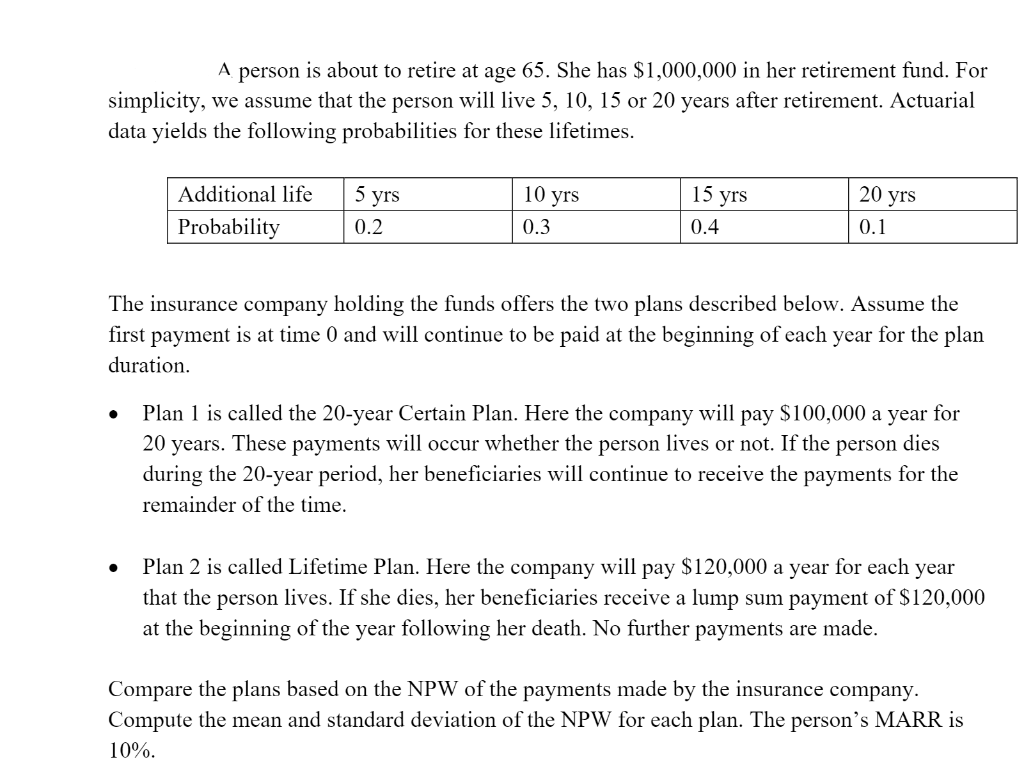Answered step by step
Verified Expert Solution
Question
1 Approved Answer
A person is about to retire at age 65. She has $1,000,000 in her retirement fund. For simplicity, we assume that the person will live

Step by Step Solution
There are 3 Steps involved in it
Step: 1

Get Instant Access to Expert-Tailored Solutions
See step-by-step solutions with expert insights and AI powered tools for academic success
Step: 2

Step: 3

Ace Your Homework with AI
Get the answers you need in no time with our AI-driven, step-by-step assistance
Get Started


